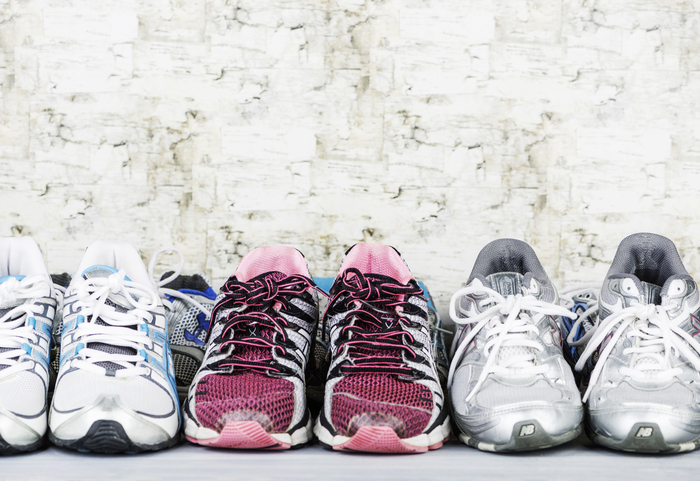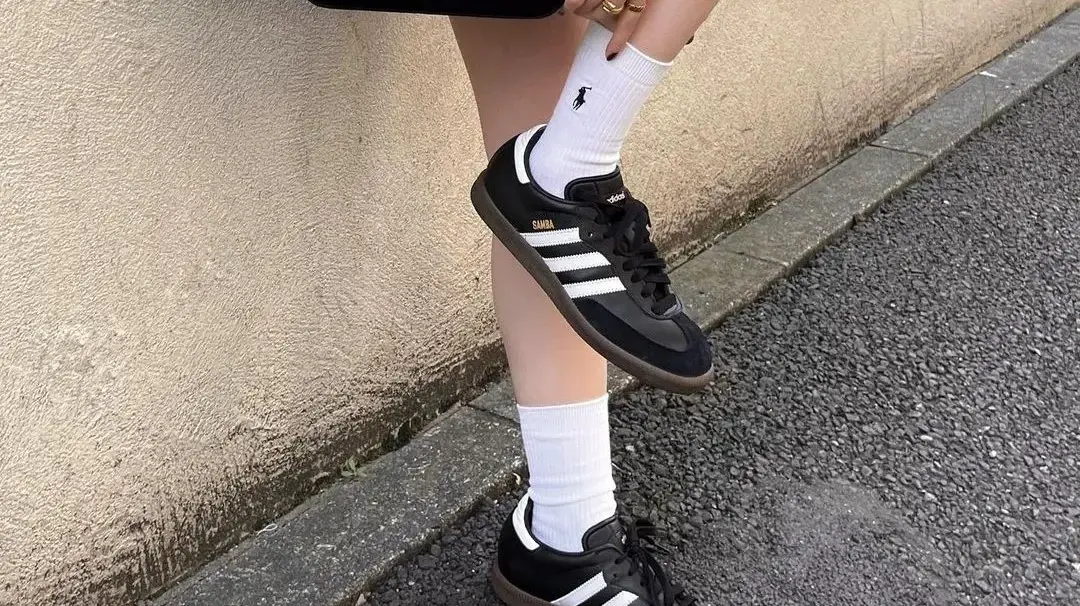What happens to the sneakers no longer used?
The disposal of shoes in general and sports shoes in particular is not a trivial matter if we think of the millions of pairs on the feet of people all over the world.
Of the 24.2 billion pairs of shoes produced globally each year, experts say most of them end up in a landfill or incinerator, because there are simply too many shoes and not enough recycling solutions.
So once they have had their time where to throw them?
While natural materials decompose quickly (cotton takes about six months while leather takes 20 to 40 years), most of our shoes contain plastic-based components that last much, much longer.
"PVC and EVA represent about 35% of all shoe materials globally," said
Sahadat Hossain, director of the Solid Waste Institute for Sustainability at the University of Texas at Arlington
in a speech on Fashionista.
"It can take up to 1,000 years to decompose."
Of course, this is all theoretical, he adds.
In modern landfills, lined with plastic and then sealed, our shoes remain intact "for as long as you can imagine".
Throwing them in the unsorted bin would be a mistake
both because shoes can release heavy metals and other toxic chemicals, and because the rubber of the sole in particular is something highly recyclable.
The ideal is to give new life.
As?
There are several disposal projects, in special shops, associations, gyms such as those that adhere to the Italian project
EsoSport
, also unique in Europe and which through an interactive map allows you to discover extensively in Italy where to leave them for a second life made of creation or redevelopment. of playgrounds, made with the anti-trauma flooring made with rubber or of athletics tracks.
But that's not all: more and more aware that social responsibility is an important value also in the relationship with the consumer, there
are many companies that promote the circular economy
, in which resources are continuously reused without waste, in relation to shoes.
We have been talking for years about the sharing economy, now from a niche topic, it has become increasingly important and 2021, according to world forecast reports, will drive social changes.
Nike's Reuse a Shoe
program
, which has been running since 1993, recycles worn out trainers from any brand.
So far they have processed 33 million pairs of shoes.
After separating the leather, foam, plastic and rubber shoes, the pieces are sanded and reused as playground surfaces, track tops, carpet pads and
even new Nike items, like perhaps the so-called Air Jordan soles.
The new material has a Nike Grind name.
On the Nike website the map of the shops where to leave them.
Not only that: as stated in the Trend Hunter 2021 report, the further step is another: to
create shoes that are at the origin of biodegradable materials
.
Adidas has
been testing the
Ultraboost DNA Loop
product since 2019
, a sneaker that can be recycled at the end of its life cycle and transformed into a new shoe: it is entirely made of a material - thermoplastic polyurethane (TPU) - and is assembled using heat. instead of glue, this means they can be returned to Adidas once worn and made into new sneakers.
In 2021 they will be put on the market.
There are also running
shoe subscriptions
from smaller brands specialized in running such as
On Running
to start a closed circuit system.
French brand
Salomon
has created local collection points for its first
fully recyclable running shoe, the Index.01
(the shoes will be washed and disassembled there so that the materials can be recycled locally into new fabrics or plastic pellets to make other high-performance footwear such as ski boots).
There is also a sole project with the
Vibram N-OIL
compound
, the innovative solution designed to offer a green alternative in the footwear world: rubber is made of over 90% natural materials and the pigments used for the colors are at 100% natural and come from plants and organic agricultural waste.
While waiting for all this to spread,
the simplest advice is to donate used shoes
.
"Worn out for you doesn't necessarily mean exhausted for someone else," says Tiffany Fuller of the New York City Department of Sanitation.
According to the American Apparel and Footwear Association, we
buy more than seven pairs of shoes a year
, the equivalent of a new pair every seven weeks.
This means that, with exceptions, most of our shoes never really have a chance to wear out.
And reuse for others is better than recycling.
By donating, shoes will likely find their way to emerging countries (charities sell around 25% of what we donate locally and export the rest), some of which boast a thriving market for worn and even refurbished footwear.
"Some of them are washed and cleaned and, if necessary, the heel is replaced," explains Steven Bethell, founder of
Bank & Vogue
, a global used clothing broker.
In Guatemala, there is a gym for cleaning sneakers, Bethell says, while in Pakistan, men's elegant shoes are resoled in large recycling plants.
If you're wondering if your shoes are fit to wear, Bethell's advice echoes Fuller's: "If in doubt, donate."
Not all footwear will find a new home in developing countries that are filled to the brim with our old stuff.
"The supply is greater than the demand," says Liz Ricketts, co-founder of the OR Foundation, a non-profit organization working with the second-hand industry in Ghana.
In Ghana, he says, up to 40 percent of clothing imported from the West is directly landfilled or burned.
He suspects the percentage is even higher with footwear.
Sneakers (both for men and women), soccer shoes and men's dress shoes are the most in demand in the international second-hand trade and are good options for donating.
If your shoes are really beaten and you can't tell someone else who loves them - a good rule of thumb is that if the uppers are still in good condition, the shoe can have a second life -
throw them in a trash can instead of the trash.







